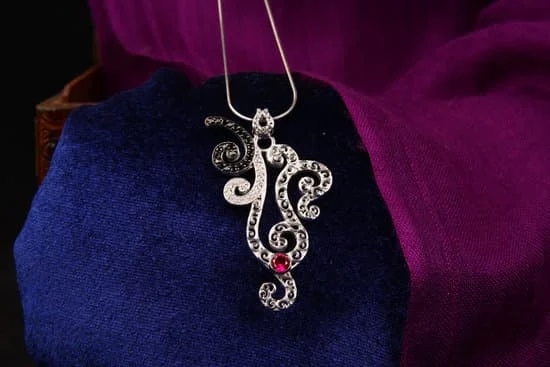Handmade jewelry has become an increasingly popular choice for consumers, with its unique designs and personalized touch. The demand for these one-of-a-kind pieces has led to a booming market for handmade jewelry, making it a promising venture for artisans.
However, understanding the profit margin in this industry is crucial for the success of any jewelry business. In this article, we will explore the appeal of handmade jewelry and its growing popularity in the market, while delving into the importance of understanding profit margins and how it can impact the sustainability of a handmade jewelry business.
The charm of handmade jewelry lies in its individuality and craftsmanship, as each piece is carefully crafted by skilled artisans. This attention to detail and personal touch sets handmade jewelry apart from mass-produced items, making it highly sought after by consumers who value uniqueness and authenticity. As more people appreciate the artistry behind handmade jewelry, there is a growing demand for these artisanal pieces in the market.
While creating beautiful and distinctive pieces is at the heart of a handmade jewelry business, having a good grasp of profit margins is essential for long-term success. Understanding the factors that affect profit margins such as materials costs, labor expenses, and overheads allows artisans to make informed decisions about pricing their products. By comprehending profit margins, makers can ensure that their business remains sustainable while continuing to produce quality handcrafted jewelry.
Importance of Understanding Profit Margins
The handmade jewelry industry is booming, with more and more consumers seeking out unique and artisanal pieces. As a result, there is a growing demand for handmade jewelry, presenting a lucrative opportunity for artisans and creators. However, it is crucial for jewelry makers to understand the importance of knowing their profit margins in order to run a successful and sustainable business.
A key factor in the success of any business is understanding its profit margin. In the handmade jewelry industry, this knowledge becomes even more critical due to the unique nature of the products. Handmade jewelry profit margins can vary greatly depending on several factors such as materials used, labor costs, overhead expenses, and pricing strategies. Therefore, having a deep understanding of these dynamics enables artisans to make informed decisions about their business operations and ultimately maximize their profitability.
One of the biggest challenges that handmade jewelry makers face is determining the right pricing for their products while maintaining a healthy profit margin. Often, creators tend to undervalue their work due to lack of understanding about their costs and expenses.
By accurately calculating their profit margin, artisans can ensure that they are fairly compensated for their craftsmanship while also remaining competitive in the market. This involves not only factoring in the cost of materials and labor but also considering overhead costs such as marketing, packaging, and shipping.
| Factors Affecting Profit Margin | Impact |
|---|---|
| Materials Used | Choice of materials can significantly affect production costs and overall profit margin |
| Labor Costs | The amount of time and skill required to create each piece directly impacts labor costs and subsequently profit margin |
| Pricing Strategies | Proper pricing ensures that artisans cover all expenses while also appealing to target customers |
Factors Affecting Profit Margin
When it comes to the handmade jewelry industry, understanding profit margins is crucial for the success of any artisan or business. There are several factors that can impact the profit margin in this industry, including materials, labor, and overhead costs. By carefully considering and managing these factors, jewelry makers can ensure a healthy profit margin and sustainable business growth.
One of the main factors that can affect the profit margin of handmade jewelry is the cost of materials. Sourcing high-quality materials at a reasonable price is essential for maximizing profits. Additionally, fluctuating material costs and availability can also impact the overall profit margin. Artisans must carefully consider their material sourcing strategies to maintain a competitive edge in the market while keeping costs in check.
The labor involved in creating handmade jewelry is another significant factor that affects the profit margin. Skilled craftsmanship and intricate designs are often key selling points for handmade jewelry, but they also require time and expertise. Balancing fair compensation for labor with ensuring a reasonable retail price can be challenging for artisans. Efficient production processes and time management strategies play a crucial role in optimizing labor costs and ultimately improving the profit margin of handmade jewelry businesses.
Overhead costs, such as rent for workspace, utilities, marketing expenses, and packaging materials, also impact the overall profit margin of handmade jewelry. Artisans need to carefully track and manage these expenses to minimize their impact on profitability. Implementing cost-saving measures and exploring alternative solutions for overhead costs can contribute to a healthier bottom line for handmade jewelry businesses.
| Factor | Impact on Profit Margin |
|---|---|
| Materials | Fluctuating costs and availability affecting overall profit margin; must find ways to source quality materials at reasonable prices |
| Labor | Balancing fair compensation with retail prices; efficient production processes essential for optimizing labor costs |
| Overhead Costs | Needs careful tracking and management; implementing cost-saving measures essential in maintaining a healthy profit margin |
Calculating Profit Margin
Understanding the Cost of Goods Sold
Calculating the profit margin for handmade jewelry begins with understanding the cost of goods sold (COGS). This includes all of the direct costs associated with producing a piece of jewelry, such as the materials used, labor costs, and any other expenses directly related to production. By accurately tracking these costs, artisans can determine the true cost of each piece and use this information to calculate their profit margin.
Formula for Calculating Profit Margin
The formula for calculating profit margin is relatively straightforward. It involves subtracting the COGS from the selling price of the item, then dividing that number by the selling price. The resulting figure is expressed as a percentage, representing the profit margin. For handmade jewelry makers, it’s crucial to ensure that all expenses are taken into account when calculating COGS in order to accurately determine their profit margin.
The Importance of Accurate Pricing
In order to maintain a healthy profit margin, it’s essential for artisans to establish accurate pricing for their handmade jewelry. This goes beyond covering just the production costs; it also involves factoring in additional expenses such as overhead costs, marketing expenses, and desired profits. By evaluating all relevant costs and setting appropriate prices for their pieces, jewelry makers can ensure that they are achieving a satisfactory profit margin while also remaining competitive in the market.
By taking these steps and implementing effective pricing strategies, handmade jewelry makers can increase their profit margins and achieve greater financial stability in their businesses.
Strategies to Increase Profit Margin
Sourcing Materials
One of the key factors that can significantly impact the profit margin of handmade jewelry is the cost of materials. In order to increase profit margins, jewelry artisans should explore various options for sourcing materials.
This can include building relationships with suppliers to secure better pricing, seeking out wholesale or bulk purchase opportunities, and even considering alternative materials that are more cost-effective without compromising on quality. By being strategic about material sourcing, artisans can reduce their production costs and ultimately improve their profit margins.
Improving Production Efficiency
Efficiency in production processes is another crucial aspect that can contribute to higher profit margins for handmade jewelry makers. Streamlining production methods, optimizing workflow, and minimizing waste are all essential strategies for improving efficiency. Investing in tools and equipment that can expedite the production process and reduce labor time can also lead to cost savings in the long run. By constantly seeking ways to improve production efficiency, artisans can be more competitive in the market and increase their profitability.
Pricing Strategies
Setting the right prices for handmade jewelry is a delicate balance between covering costs, making a reasonable profit, and remaining attractive to customers. Jewelry artisans should carefully consider their pricing strategies by factoring in not only material and labor costs but also market demand and perceived value. Conducting market research to understand pricing benchmarks within the industry is important.
Additionally, offering different price points and catering to different customer segments can help maximize sales opportunities without sacrificing profit margin. Implementing thoughtful pricing strategies tailored to the target audience will contribute to sustainable profitability for handmade jewelry businesses.
By implementing these strategies – sourcing materials efficiently, improving production processes, and setting smart pricing strategies – jewelry artisans can work towards increasing their profit margins while maintaining a strong position in the competitive handmade jewelry market.
Case Studies
In the competitive world of handmade jewelry, maintaining a healthy profit margin is essential for the success and sustainability of a business. Several successful artisans and jewelry makers have been able to not only create beautiful and unique pieces but also run a profitable venture. Here are some case studies that showcase how these businesses have managed to maintain a healthy profit margin:
1. Mahogany Jewelry Co.: Mahogany Jewelry Co. specializes in creating handcrafted wooden jewelry pieces that are both stylish and sustainable. The founder, Sarah Parker, has been able to maintain a healthy profit margin by carefully sourcing her materials and keeping her production costs low. By building strong relationships with suppliers and purchasing materials in bulk, she is able to minimize material costs, ultimately increasing her profit margins.
2. Gemstone Designs: Gemstone Designs is known for its exquisite handmade jewelry featuring high-quality gemstones. The business has maintained a healthy profit margin by implementing efficient production methods. By streamlining their manufacturing process and investing in tools and equipment that improve efficiency, Gemstone Designs has been able to reduce labor costs while increasing output, leading to higher profits.
3. Artisanal Treasures: Artisanal Treasures is a small boutique jewelry business that focuses on personalized handmade pieces. The owner, Emily Nguyen, has been successful in maintaining a healthy profit margin by implementing strategic pricing strategies. By conducting market research and understanding the perceived value of her products, Emily is able to price her jewelry competitively without compromising quality, resulting in increased sales and profitability.
These case studies highlight the importance of various strategies in maintaining a good profit margin in the handmade jewelry industry. By carefully managing factors such as materials, labor, overhead costs, production efficiency, sourcing strategies, and pricing techniques, artisans can set themselves up for success in this competitive market while ensuring profitability for their businesses.
Challenges in Maintaining a Good Profit Margin
Handmade jewelry artisans face a multitude of challenges when it comes to maintaining a good profit margin. Despite the growing popularity of handmade jewelry, these artists often struggle with various obstacles that can significantly impact their bottom line. It is crucial for jewelry makers to be aware of these challenges and find effective ways to overcome them in order to achieve a reasonable profit margin.
Some common challenges faced by handmade jewelry makers include:
1. Rising costs of materials: The cost of materials for handmade jewelry, such as gemstones, precious metals, and other components, can fluctuate and increase over time. Sourcing high-quality materials at affordable prices is essential for maintaining a healthy profit margin.
2. Time-consuming production process: Handcrafting each piece of jewelry requires time and skill, which can impact the overall profitability. Finding ways to improve production efficiency without compromising quality is key to maximizing the profit margin.
3. Market competition: With the increasing demand for handmade jewelry, competition among artisans has also intensified. Standing out in a competitive market while still pricing products competitively can be challenging for many jewelry makers.
Overcoming these challenges requires strategic planning and creative solutions. By implementing cost-effective sourcing strategies, streamlining production processes, and effectively positioning their brand in the market, artisans can address these obstacles and improve their profit margins.
Case studies have shown that successful handmade jewelry businesses have been able to navigate these challenges by diversifying their product offerings, establishing strong relationships with suppliers to negotiate better prices, and utilizing digital marketing strategies to reach a wider audience.
By understanding and addressing these common challenges, handmade jewelry makers can effectively manage their profit margins and ensure the sustainability of their businesses in an increasingly competitive industry.
Conclusion
In conclusion, the handmade jewelry industry offers a promising opportunity for artisans to create unique and personalized pieces that appeal to a growing market of consumers. Understanding the profit margin is crucial for the success of any business, and this is especially true for those in the handmade jewelry industry. By carefully considering factors such as materials, labor, and overhead costs, artisans can accurately calculate their profit margin and make informed decisions about pricing and production.
It is evident that there are several factors that can impact the profit margin of handmade jewelry, but there are also strategies that artisans can employ to increase their profitability. By sourcing materials wisely, improving production efficiency, and implementing effective pricing strategies, jewelry makers can enhance their profit margins and strengthen their businesses.
While there are certainly challenges in maintaining a good profit margin in the handmade jewelry industry, it is clear that with careful consideration and strategic planning, artisans can achieve success. The case studies presented in this article serve as inspiration for those looking to grow their businesses and establish a sustainable profit margin.
Ultimately, understanding and managing profit margins is essential for the long-term success of handmade jewelry businesses. By implementing the tips and strategies outlined in this article, artisans can work towards maximizing their profitability while continuing to create beautiful handmade jewelry.
Frequently Asked Questions
What Is a Normal Profit Margin on Jewelry?
A normal profit margin on jewelry can vary depending on various factors such as materials, labor costs, and market demand. Generally, a typical profit margin for jewelry can range from 25% to 75%.
What Is the Average Markup for Handmade Jewelry?
The average markup for handmade jewelry is typically around 2 to 3 times the production cost. This allows for covering not only the material expenses but also factoring in labor and overhead costs.
Can I Make Money Selling Handmade Jewelry?
It is possible to make money selling handmade jewelry, but success will depend on several factors including unique designs, quality craftsmanship, effective marketing strategies, and understanding the target market. With the right approach, selling handmade jewelry can be profitable.

Welcome to my jewelry blog! My name is Sarah and I am the owner of this blog.
I love making jewelry and sharing my creations with others.
So whether you’re someone who loves wearing jewelry yourself or simply enjoys learning about it, be sure to check out my blog for insightful posts on everything related to this exciting topic!





